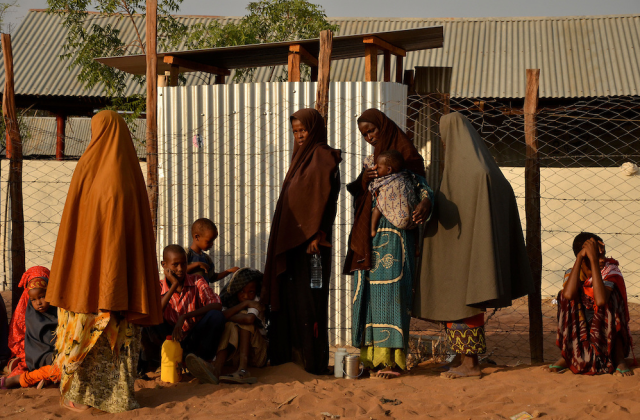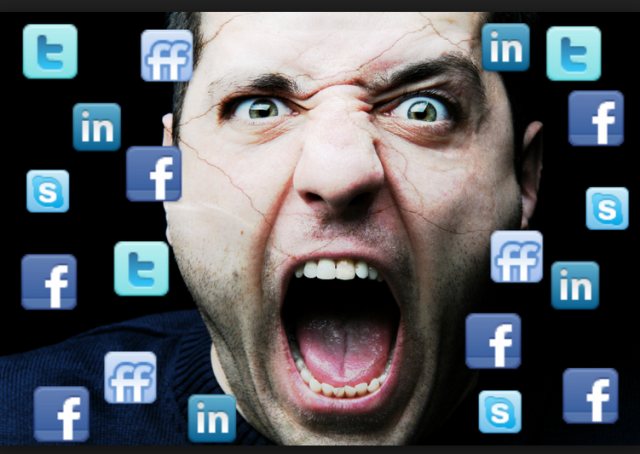I have meant to write this blog post since very long time. But I never did since I realized that I am not sure I know what exactly I want to say on the matter. So, take this blog post for what it is: a reflection on what I have been thinking about the issue of using social media to communicate during humanitarian emergencies, and specifically on their usage to communicate with affected communities (I personally dislike this term, but I will use it, for lack of a better one).
I’ve always been a big fan of using social media to communicate during disasters. If we look at Haiti for example, we can see the incredible use that not only “official” organization have done of the tool, but also and foremost the local population. The example of the NYC police department during Sandy or of Carel Pedre in Haiti are notable examples of the way different actors have been using social media as a powerful tool during emergencies.
On the other side, if we look at the events coming out from the Arab Spring, we see other very interesting examples of the use of social media by local communities, examples that we have just barely really analyzed, due to the fact that the majority of the interactions were happening in Arabic, while most of the analysis of those phenomenon are being done by English speakers academics.
Notable examples of people using social media during natural disasters can be found in the Philippines, like this map generated by OCHA using social media, or in New Zealand during the earthquake in 2011.
Now, the question I have been trying to answer to in the past 2 years on the matter is: has any of those initiatives demonstrated without doubts that social media generated content can and is used to make decisions by responders (both local population and humanitarian responders), in a way that allow us to say that those tools are indeed necessary for emergency response?
Unfortunately so far the answer that I have given to this question is no. This does not necessarily mean that indeed social media cannot be used to inform decisions, but that we have not yet been able to demonstrate it.
For several reasons:
1. The technology gap is still there. We may see the future as a world where everyone will have a Twitter account, and where the entire world will have cheap and easy access to internet, but so far this is not yet happening. In the refugee camps in Dadaab, in Mali, in Niger, in Central African Republic people do not have access to those means, internet is still unreliable and where present, expensive. Their emergency is not twitted, facebooked it or youtubed it. (Photo: Meridith Kohut / Internews)
2. Responders still use other means to gather information. So far there is not prove that any emergency responder agency has been using social media data for targeted and specific responses, apart from single and isolated cases. They still need to figure out the verification issues, the filtering of the enormous amount of data, the processing of the data, and the analysis of it. Once they will have this figured out, then they will be able to see if the intelligence gathered from that data is usable at all. On the community side, according to Internews Information Needs Assessments, people still rely on Radio, or word of mouth to gather the information they need to make better informed decisions.
3. The use of more “traditional” tools, like phones, has proven to be more efficient and more reliable. 911 is still the first number people in the US call in case of emergency, as well as in other countries (where there are other similar there are other numbers). Not only phones are much more widespread than internet, but also allow for more structured (and private) interactions in between people in need and responders – without the noise of the social media.
4. The human contact: we often tend to forget that in emergencies people do need a human contact. Talking to someone looking at him/her in the eye has a huge psychological value that a piece of information, for how useful it could be, does not have. Human interactions are still the basics of what people in distress look for, and are still a fundamental part of the recovery path. Sometimes we should ask ourselves not if a toll is useful or not, but if THAT tool is the best way to convey that MESSAGE.
5. Recents studies, like this one, and this one, and this other one, highlight that social media so far do not seem to carry a specific value when it comes to providing quality information as opposed to other sources. It also looks like it much less trusted than traditional media. Even in the social media sphere it looks like traditional media are still the one that people turn to, to understand what is going on, especially in times of incertitude. In this sense, it looks like traditional media is doing a good job at highlighting relevant information and guiding people through the noise of the social media chatter. This study form Farida Vis on the London Riots shows how the top 200 accounts during the riots where in fact Mainstream Media and Journalists:
Conclusions
Those are some of the potentials and opportunities that I see in using social media during emergencies:
A. Social Media seems so far to be a very good ADDITIONAL tool to be used by official sources to spread information during an emergency. The tricky point is: how prepared official bodies/agencies are in using this tool, and how much of their strategy is being build in advance so that during the emergency they are actually ready to do it?
B. Social Media still need to prove its value when it comes to be a tool to gather emergency information from affected communities. So far, as I said before, there is little data on how social media information has been used by organization to make decisions. This does not means that the value is not there, but that we are still in the process of understanding how this data can be used, by whom and why. Anecdotal evidence is not enough, and we are still struggling to find tools that would allow us to monitor and understand what is the value of the data collected via social media during an emergency. A huge opportunity can be identified here in terms of working more with humanitarian organization in general to understand their decision making processes, so that social media data can be analyzed and provided in a format that make sense to them, and can be integrated with other data.
On the other side, we also still need to prove there there is anything valuable in the data exchanged on Social Media during emergencies. We still need to demonstrate that Social Media is a tool that communities use during emergencies AND that carries valuable information that are not already known by responders through other means. Do communities really communicate important information during disasters using SM? And do we define what is “important”? Also, do communities on Social Media make decisions out of Social Media content during emergencies?
The third factor to consider is the comparative advantage: does Social Media provide any advantage when it comes to relevant and timely information to be gathered in order to make decisions? In other words, is SM economically sustainable? Is the time, and people, and technology used to filter, analyze and manage social media during emergencies really well spend?
C. The Social Media network is as valuable as the real social network. If we work too much on building one and do not work enough the build the later one, we are setting ourselves up for failure. On the other side, huge opportunities lies in the study of social networks and their modeling in disasters. If we look at trusted sources and important nodes in those networks, we can observe how they function during disasters and try to predict where people will turn to in case of need. This will give us a lot of insights about which interactions to observe and monitor during emergencies.
All in all, there is a lot that we do not know, and unfortunately there is also a lot of misleading information out there. The way we carry out analysis of Social Media content from affected communities and the intelligence we get from it needs to be based on very scientific and precise methodologies.
In addition to that there is also very much a lack of fundings in this kind of research, as it seems that as much as donors are interested in funding new cool technologies and big data projects, they are not that interested in funding research to understand how that data can become really usable and relevant.



During emergencies in India, mainstream media is the most relied upon and nothing beats ham radios. Even when the mobile networks are still up and working.